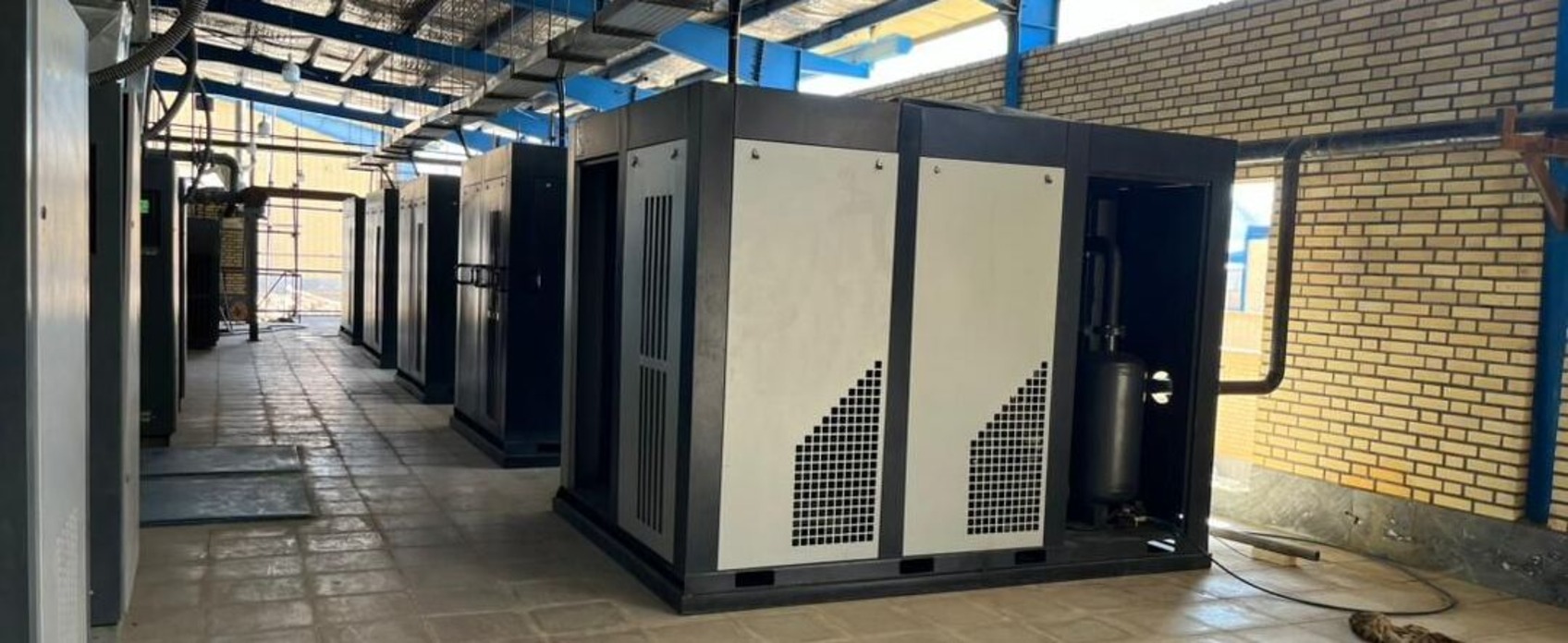 All Products
All Products
Compressors are indispensable machines that power a wide array of industries by converting mechanical energy into compressed air or gas. These versatile devices are used in everything from manufacturing plants and automotive workshops to refrigeration systems and medical facilities. By compressing air or gas, compressors enable processes that require high-pressure outputs, making them a cornerstone of modern industrial operations. This comprehensive guide explores the types, working principles, applications, advantages, and maintenance of compressors, while also addressing common questions to provide a complete understanding of these critical machines. Designed to be engaging and informative, this article aims to be your go-to resource for all things compressors.
What is a Compressor?
A compressor is a mechanical device that increases the pressure of a gas by reducing its volume. This process involves drawing in air or gas, compressing it, and delivering it at a higher pressure for various applications. Compressors are classified as positive displacement or dynamic, depending on their method of compression. They are powered by electric motors, diesel engines, or other energy sources and are designed to meet specific pressure and flow requirements.
Compressors are essential in industries where compressed air or gas is needed to power tools, operate machinery, or facilitate processes like refrigeration and gas transportation. Their ability to deliver consistent, high-pressure output makes them vital for enhancing productivity and efficiency across multiple sectors.
Types of Compressors
Compressors come in various designs, each tailored to specific applications. The two primary categories are positive displacement and dynamic compressors, with several subtypes under each.
Positive Displacement Compressors
Positive displacement compressors work by trapping a fixed volume of gas and reducing its volume to increase pressure. Common types include:
Reciprocating Compressors:
-
Utilize pistons driven by a crankshaft to compress gas in a cylinder.
-
Ideal for high-pressure, low-flow applications, such as in oil refineries and gas pipelines.
-
Available in single-stage (for lower pressures) and multi-stage (for higher pressures) configurations.
-
Known for durability but may require more maintenance due to moving parts.
Rotary Screw Compressors:
-
Feature two interlocking helical rotors that compress gas as they rotate.
-
Provide continuous, pulsation-free airflow, making them suitable for industrial applications like manufacturing and automotive.
-
Available in oil-injected (for efficiency) and oil-free (for clean air) variants.
-
Highly reliable with lower maintenance needs compared to reciprocating compressors.
Rotary Vane Compressors:
-
Use a rotor with sliding vanes to compress gas within a cylindrical chamber.
-
Compact and quiet, making them ideal for small-scale applications like dental offices and laboratories.
-
Offer smooth operation but are less suited for high-pressure demands.
Dynamic Compressors
Dynamic compressors use rotating impellers to accelerate gas, converting kinetic energy into pressure. They are best for high-flow, low-pressure applications. Key types include:
Centrifugal Compressors:
-
Employ high-speed impellers to impart velocity to gas, which is then converted to pressure.
-
Common in HVAC systems, power plants, and large-scale industrial processes.
-
Highly efficient for continuous operation but less effective for intermittent use
Axial Compressors:
-
Use rows of rotating and stationary blades to compress gas in a linear flow.
-
Primarily used in jet engines and gas turbines due to their ability to handle large volumes of air.
-
Complex and expensive, typically reserved for specialized applications.
How Compressors Work
The working principle of a compressor depends on its type, but the general process involves three stages:
Intake: Air or gas is drawn into the compressor through an inlet. Filters often remove contaminants to ensure clean input.
Compression: The gas is compressed by reducing its volume (positive displacement) or increasing its velocity (dynamic). This increases the gas’s pressure and temperature.
Discharge: The compressed gas is released through an outlet for use in the intended application. In some compressors, additional systems (e.g., oil separators or coolers) process the gas before delivery.
For example, in a rotary screw compressor, two rotors mesh to trap and compress gas, while in a centrifugal compressor, an impeller accelerates the gas, and a diffuser slows it down to increase pressure. Each type is engineered to optimize performance for specific pressure and flow requirements.
Applications of Compressors
Compressors are ubiquitous across industries, powering a wide range of processes:
-
Manufacturing: Provide compressed air for pneumatic tools, robotic arms, and assembly lines.
-
Automotive: Used in tire inflation, spray painting, and operating air-powered tools in repair shops.
-
Oil and Gas: Facilitate drilling, gas transportation, and refining processes.
-
Refrigeration and HVAC: Compress refrigerants to enable cooling in air conditioning systems, cold storage, and industrial chillers.
-
Medical and Dental: Supply clean, compressed air for ventilators, dental drills, and surgical tools.
-
Construction: Power jackhammers, drills, and other heavy-duty tools at job sites.
-
Aerospace: Axial compressors drive jet engines, while smaller compressors support ground operations.
-
Food and Beverage: Oil-free compressors ensure contaminant-free air for packaging and processing
The versatility of compressors makes them a critical component in both heavy industry and specialized applications.
Advantages of Compressors
Compressors offer numerous benefits that make them indispensable:
Versatility: Available in various types and configurations to suit diverse applications.
Efficiency: Modern compressors, especially those with variable speed drives (VSD), optimize energy use by matching output to demand.
Reliability: Designed for continuous operation with minimal downtime, particularly rotary screw and centrifugal models.
Compact Designs: Many compressors, like rotary vane models, are space-efficient, ideal for small facilities.
High Performance: Capable of delivering consistent pressure and flow for demanding tasks.
Clean Air Options: Oil-free compressors provide contaminant-free air for sensitive industries like pharmaceuticals
Challenges and Limitations
While compressors are highly effective, they come with some challenges:
-
High Initial Costs: Advanced models, such as oil-free or VSD compressors, can be expensive to purchase.
-
Maintenance Requirements: Reciprocating compressors, in particular, require regular maintenance due to their many moving parts.
-
Energy Consumption: Inefficient operation or poor maintenance can lead to high energy costs.
-
Noise Levels: Some compressors, especially reciprocating models, can be noisy, requiring soundproofing in indoor settings.
-
Heat Generation: Compression generates heat, necessitating effective cooling systems to prevent overheating
Maintenance Tips for Compressors
Proper maintenance is crucial to ensure optimal performance and longevity. Key maintenance practices include:
Regular Inspections: Check for leaks, wear, or damage in components like rotors, pistons, or impellers.
Filter Replacement: Replace air and oil filters regularly to maintain air quality and prevent contamination.
Lubrication: For oil-injected compressors, change oil at recommended intervals to reduce friction and wear.
Cooling System Care: Ensure cooling systems (air or water-based) are clean and functioning to manage heat buildup.
Belt and Motor Checks: Inspect belts, bearings, and motors for wear and alignment to prevent breakdowns.
Monitoring Systems: Use smart control systems to track performance metrics and schedule predictive maintenance.
By adhering to a regular maintenance schedule, operators can minimize downtime, reduce energy costs, and extend the compressor’s lifespan.
Advances in Compressor Technology
Recent innovations have enhanced compressor performance, efficiency, and sustainability:
-
Variable Speed Drives (VSD): Adjust motor speed to match demand, reducing energy waste and operating costs.
-
IoT Integration: Smart compressors with IoT connectivity enable real-time monitoring, predictive maintenance, and remote diagnostics.
-
Eco-Friendly Designs: Manufacturers are developing compressors with energy-efficient components and environmentally friendly lubricants.
-
Noise Reduction: Improved designs and soundproofing materials make modern compressors quieter, ideal for urban or indoor settings.
-
Oil-Free Technology: Advances in materials and coatings have improved the durability and efficiency of oil-free compressors.
These innovations ensure compressors remain at the forefront of industrial technology, meeting the demands of modern applications.
Choosing the Right Compressor
Selecting the right compressor depends on several factors:
-
Application Needs: Determine the required pressure, flow rate, and air quality (e.g., oil-free for medical use).
-
Operating Environment: Consider space constraints, noise tolerance, and power availability.
-
Budget: Balance initial costs with long-term energy and maintenance expenses.
-
Duty Cycle: Choose a compressor suited for continuous or intermittent operation.
-
Energy Efficiency: Opt for VSD models or energy-efficient designs to reduce operating costs.
Consulting with a compressor specialist or manufacturer can help ensure the chosen model meets specific requirements.
Conclusion
Compressors are the unsung heroes of modern industry, powering everything from manufacturing lines to medical equipment with unmatched efficiency and reliability. By understanding their types, applications, and maintenance needs, businesses can harness the full potential of these machines to drive productivity and innovation. With ongoing advancements in energy efficiency, smart technology, and eco-friendly designs, compressors continue to evolve, meeting the demands of a rapidly changing industrial landscape. Whether you’re in manufacturing, healthcare, or construction, choosing the right compressor and maintaining it properly can make all the difference in achieving operational excellence.
Frequently Asked Questions (FAQs)
1. What is the difference between a reciprocating and a rotary screw compressor?
2. When should I choose an oil-free compressor?
3. How can I improve the energy efficiency of my compressor?
4. How often should I maintain my compressor?
درخواست خود را برای ما ارسال کنید



